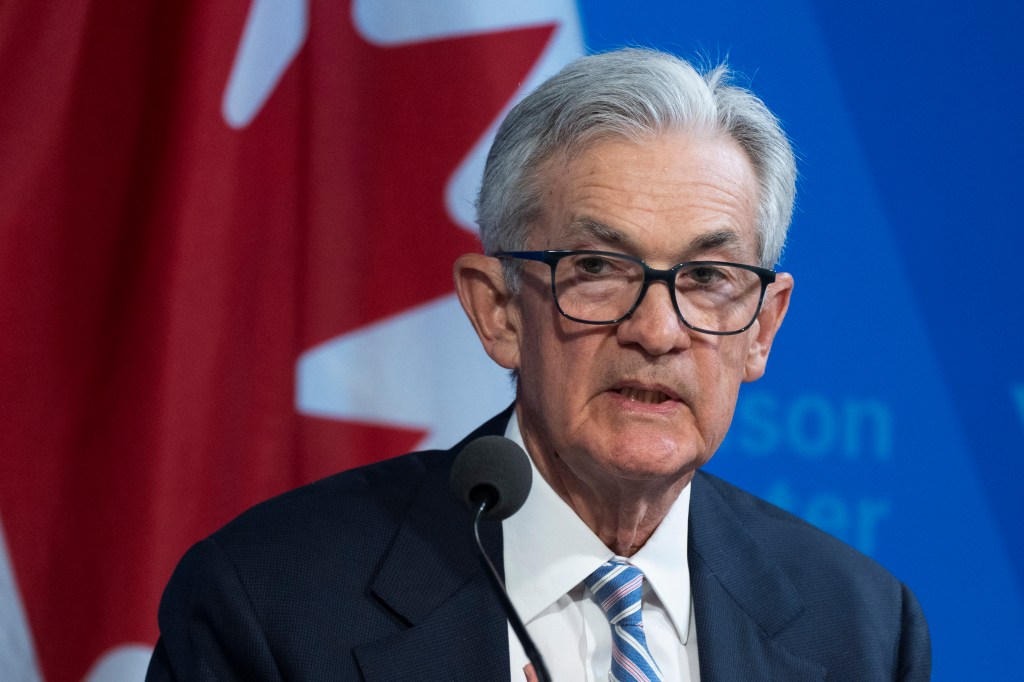The Federal Reserve as expected held interest rates steady on Wednesday, but signaled it is still leaning towards eventual reductions in borrowing costs.
However, the central bankers put a red flag on recent disappointing inflation readings and suggested a possible stall in the movement towards more balance in the economy.
The Fed’s latest policy statement, issued at the end of a two-day meeting, kept key elements of its economic assessment and policy guidance intact, noting that “inflation has eased” over the past year, and framing its discussion of interest rates around the conditions under which borrowing costs can be lowered.
“The (Federal Open Market Committee) does not expect it will be appropriate to reduce the target range until it has gained greater confidence that inflation is moving sustainably towards 2%,” the Fed repeated in a unanimously-approved statement that still indicated the next move on rates will be down.
That continues to leave the timing of any rate cut in doubt, and Fed officials made emphatic their concern that the first months of 2024 have done little to build the confidence they seek in falling inflation.

“In recent months, there has been a lack of further progress towards the Committee’s 2% inflation objective,” the Fed said in the statement.
Where the prior statement in March suggested an improving dynamic, saying that the risks to the economy “are moving into better balance,” the new statement hinted that the process may have stalled with its assessment that risks “have moved toward better balance over the past year.”
Wall Street traders now envision just a single rate cut this year to the Fed’s benchmark rate, now at a 23-year high after 11 hikes that ended last July.
Traders have sharply downgraded their expectations since 2024 began, when they had expected up to six rate cuts.
As recently as the Fed’s last meeting March 20, the policymakers themselves had projected three rate reductions in 2024.
Rate cuts by the Fed would lead, over time, to lower borrowing costs for consumers and businesses, including for mortgages, auto loans and credit cards.
Most economists say they still expect two cuts this year. But many acknowledge that one or even no rate reductions are possible.
The reason is that elevated inflation is proving more persistent than almost anyone had expected.
According to the Fed’s preferred gauge, inflation reached a 4.4% annual rate in the first three months of this year, up from 1.6% in the final quarter of 2023 and far above the Fed’s 2% target.
At the same time, the economy is healthier and hiring is stronger than most economists thought it would be at this point.
The unemployment rate has remained below 4% for more than two years, the longest such streak since the 1960s.
During the first quarter of the year, consumers spent at a robust pace.

As a result, Chair Jerome Powell and other Fed officials have made clear that they are in no hurry to cut their benchmark rate.
In his most recent remarks two weeks ago, Powell indicated that the pace of price increases had essentially undercut Fed officials’ confidence that inflation was steadily heading back to their target, thereby making rate cuts anytime soon less likely.
He also said the Fed would forgo any rate cuts as long as inflation remained elevated. He stopped short, though, of suggesting that any new rate increases were under consideration.
“If higher inflation does persist,” the Fed chair said, “we can maintain the current level of (interest rates) for as long as needed.”
Most economists expect Powell to reinforce that message during the news conference he will hold after the Fed’s meeting ends Wednesday. But he could go still further.
During his last news conference in March, for example, Powell said the Fed’s rate was “likely at its peak” and that, “if the economy evolves broadly as expected, it will likely be appropriate” to start cutting rates this year.
If Powell avoids repeating that sentiment this time, it could suggest that the Fed is less likely to reduce its benchmark rate this year.
“If that (message) is dropped, I think it would be a much stronger signal that we have to hold rates higher for longer,” said Jonathan Pingle, chief economist at UBS.
Though economic growth reached just a 1.6% annual pace in the first three months of this year, a slowdown from the previous quarter, consumer spending grew at a robust pace, a sign that the economy will keep expanding.
That persistent strength has caused some Fed officials to speculate that the current level of interest rates may not be high enough to have the cooling effect on the economy and inflation that they need. If so, the Fed could even have to switch back to rate increases at some point.
“I continue to see the risk that at a future meeting we may need to increase (rates) further should progress on inflation stall or even reverse,” Michelle Bowman, a member of the Fed’s Board of Governors, said in early April.
On Wednesday, the Fed may also announce that it’s slowing the pace at which it unwinds one of its biggest COVID-era policies: Its purchase of several trillion dollars in Treasury securities and mortgage-backed bonds, an effort to stabilize financial markets and keep longer-term interest rates low.
The Fed is now allowing $95 billion of those securities to mature each month, without replacing them. Its holdings have fallen to about $7.4 trillion, down from $8.9 trillion in June 2022 when it began reducing them.
By cutting back its holdings, the Fed could contribute to keeping longer-term rates, including mortgage-rates, higher than they would be otherwise. That’s because as it reduces its bond holdings, other buyers will have to buy the securities instead, and rates might have to rise to attract the needed buyers.
During its meeting in March, Fed official agreed to reduce the pace of its runoff to about $65 billion a month, according to the meeting minutes.
The Fed last reduced its balance sheet in 2019, and while doing so it inadvertently disrupted financial markets and caused short-term interest rates to spike that September.
Its goal in slowing the pace at which it reduces its bond ownership is to avoid a similar market disruption by moving more methodically.
With Post Wires














